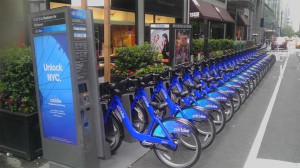Whether traveling on rural roads or inner-city streets, you’re likely to see a lot more bicyclists pedaling their way alongside four-wheeled traffic. Bikes have become hip again, it seems, especially with Generations X and Y. And a growing list of cities – including Chicago, San Francisco and New York – even make it possible to bike share, an encouraged alternative for commuters and tourists alike.
Unfortunately, new research reveals that with the increase in bicycle usage, there’s a concurrent increase in crashes, the annual cycle death rate rising from 621 to 722 between 2010 to 2012, reports the Governors Highway Safety Association, or GHSA. That’s an alarming 16% jump even as overall highway deaths – including automobiles, motorcycles, pedestrians and bicycles – has been declining.
Notes a statement from the GHSA, “Bicycle fatalities are increasingly an urban phenomenon, accounting for 69 percent of all bicycle fatalities in 2012, compared with 50 percent in 1975. These changes correlate with an increase in bicycling commuters — a 62 percent jump since 2000, according to 2013 Census Bureau data.”
Another notable trend is the rise in fatalities among adults, rather than the children who used to be the ones most likely to start pedaling.
If there’s a positive side, bicycle fatalities are down sharply from the 1970s and ‘80s. The record death toll came in 1975, with 1,003 deaths, while the fatality rate averaged 889 during the 1980s, the authors note.
(Limited “geographic recalls” could be putting millions of American motorists at risk. Click Hereto find out why.)
There have been a number of shifts over the past few decades. Adults older than 20 accounted for a full 84% of the fatalities in 2012, up from just 21% in 1975, according to Dr. Allan Williams, a safety researcher and author of the new study.
The report notes that bicyclists killed in motor vehicle crashes increased in 22 states between 2010 and 2012. But six states, in particular, accounted for 54% of the fatalities: California, Florida Illinois, New York, Michigan and Texas.
“These are high population states with many urban centers,” pointed out Williams, “and likely reflect a high level of bicycle exposure and interaction with motor vehicles.”
Whether it suggests men are more willing to take risks or simply are more likely to ride, 88% of the bicycle fatalities in 2012 were male.
(Takata hit with major lawsuit, even as airbag recall could expand sharply. Click Here for the story.)
What may be the most disturbing aspect of the new study is the implication that many fatalities could have prevented had riders taken the same precautions as they’re asked to do when slipping behind a steering wheel. While they can’t buckle up, they can wear helmets – and ride sober.
At least two-thirds of those killed in bicycle accidents were not wearing helmets, the data reveal, while 28% of those age 16 or older had blood alcohol levels that would have landed them DUI citations if driving – at least .08%. That compares with 33% of fatally injured passenger vehicle drivers, the research shows.
“What’s notable here,” said Dr. Williams, “is that the percentage of fatally injured bicyclists with high BACs has remained relatively constant since the early 1980s and did not mirror the sharp drop in alcohol-impaired driving that occurred among passenger vehicle drivers in the 1980s and early 1990s.”
(Back-up cameras are saving lives, notes new AAA study. Click Here for more.)
Curiously, the report suggests “this is not necessarily a national issue,” pointing out that in 23 states, bicycle deaths averaged 5 or less annually during the three-year study period.
“Many states are dedicating resources to ensuring the safety of all roadway users, including bicyclists, by investing in educating bicyclists and motorists, promoting helmet use, enforcing motor vehicle laws and implementing infrastructure changes,” said Jonathan Adkins, GHSA Executive Director.
In some parts of Florida, for example, police officers are stopping bicyclists riding at night without lights. And a number of states are now participating in the Complete Streets program that aims for road designs that are safer for bikes and pedestrians, as well as for motor vehicles.


I’m betting that people talking or texting while riding a bike may have an impact on the increase in fatalities.